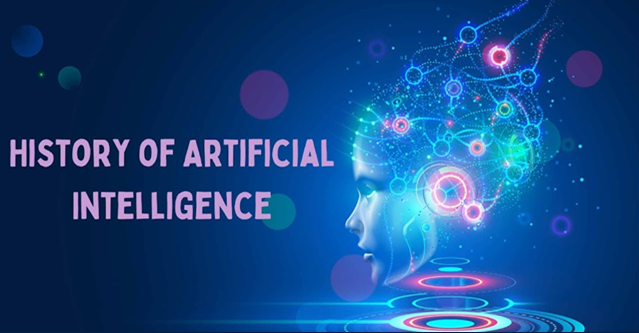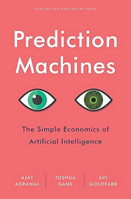
I’m diving into a topic that has fascinated me for years: the evolution of Artificial Intelligence (AI). We often hear about AI’s latest advancements, but it’s crucial to understand how we got here. AI’s journey has been a long and intriguing one, marked by significant milestones and continuous development. Let’s explore how AI has transformed from a concept in the lab to an integral part of our daily lives.
Introduction
Artificial Intelligence, or AI, is a term that’s become ubiquitous in today’s tech-driven world. But did you know that AI has been part of our environment for decades? While recent advancements have brought AI into the spotlight, its roots go much deeper. This article will take you through the historical context of AI, its gradual evolution, and the factors that have influenced our perception of AI over the years.
The Early Days of AI (1950s-1980s)
Foundational Work
The journey of AI began in the 1950s, with pioneers like Alan Turing and John McCarthy laying the groundwork. Turing’s concept of a machine that could simulate any human intelligence task was revolutionary. McCarthy, on the other hand, coined the term “artificial intelligence” and organized the Dartmouth Conference in 1956, which is considered the birth of AI as a field.
Expert Systems
In the 1970s and 1980s, AI research focused on developing expert systems. These systems were designed to mimic the decision-making abilities of a human expert in specific domains, such as medical diagnosis and financial analysis. While these systems were impressive, they were limited in scope and often confined to academic or specialized industrial applications.
Machine Learning and Data (1990s-2000s)
Improved Algorithms
The 1990s marked a significant shift with the rise of machine learning. This approach enabled AI systems to learn from data and improve over time, rather than relying on explicitly programmed rules. Machine learning algorithms, such as decision trees and support vector machines, became more sophisticated, leading to more practical applications.
Increased Data Availability
The growth of the internet in the 1990s and 2000s provided vast amounts of data, fueling the development of more advanced AI systems. This era saw the emergence of recommendation systems, natural language processing, and other applications that began to hint at AI’s potential in everyday life.
Modern AI (2010s-Present)
Deep Learning Breakthroughs
The 2010s brought about a revolution in AI with the advent of deep learning. Utilizing neural networks with many layers, deep learning models achieved remarkable results in tasks like image and speech recognition. This era saw AI systems surpass human performance in certain benchmarks, such as the famous ImageNet competition.
Consumer Applications
AI’s visibility skyrocketed as it became integrated into consumer products. Digital assistants like Siri and Alexa, autonomous vehicles, and advanced recommendation systems in platforms like Netflix and Amazon showcased AI’s capabilities to a broad audience. AI was no longer a distant, academic concept but a tangible part of everyday life.
Factors Influencing Perception
Media and Public Awareness
One reason for the recent surge in AI awareness is the significant media attention given to high-profile AI applications and advancements. Stories about self-driving cars, AI defeating humans in games like Go, and the ethical implications of AI have captured the public’s imagination.
Technological Maturity
AI has reached a level of maturity where its applications are more robust, reliable, and impactful. This maturity has led to increased adoption across various industries, from healthcare to finance to entertainment.
Policy and Ethics Discussions
The growing discourse around AI ethics, policy, and regulation has brought AI to the forefront of public and scientific conversations. Concerns about privacy, bias, and the future of work have prompted important discussions about how we develop and deploy AI responsibly.
AI in Everyday Life
As AI became integrated into everyday products and services, its presence became more apparent. From personalized recommendations on streaming platforms to advanced features in smartphones, AI’s impact on daily life is undeniable.
The Idea of a “Beta Stage”
The concept of AI being in a “beta stage” for decades reflects the continuous evolution and improvement of AI technologies. While early AI systems were limited and experimental, modern AI systems are more sophisticated and capable, but they are still evolving. AI’s journey from experimental systems to powerful, everyday tools has been gradual, and while scientists and researchers have been working on AI for decades, the cumulative progress has only recently led to the transformative applications we see today.
Conclusion
The evolution of AI over the decades is a testament to human ingenuity and persistence. From the early days of foundational research to the modern breakthroughs in deep learning and consumer applications, AI has come a long way. Understanding this journey helps us appreciate the complexity and potential of AI, as well as the challenges and ethical considerations that come with it. As we look to the future, AI will undoubtedly continue to evolve, shaping our world in ways we can only begin to imagine.
Highly Rated Books on AI
- Life 3.0: Being Human in the Age of Artificial Intelligence by Max Tegmark
- Superintelligence: Paths, Dangers, Strategies by Nick Bostrom
- Artificial Intelligence: A Modern Approach by Stuart Russell and Peter Norvig
- Prediction Machines: The Simple Economics of Artificial Intelligence by Ajay Agrawal, Joshua Gans, and Avi Goldfarb
- Deep Learning (Adaptive Computation and Machine Learning series) by Ian Goodfellow, Yoshua Bengio, and Aaron Courville
 |
 |
 |
 |
 |
Support Techcratic
If you found this article helpful and would like to support Techcratic, consider making a Bitcoin donation. Your contributions help us continue to provide high-quality content and resources.
Bitcoin Address: bc1qlszw7elx2qahjwvaryh0tkgg8y68enw30gpvge
If you wish to donate through other means, please contact us at the Techcratic Contact form. Thank you.
Disclaimer: As an Amazon Associate, Techcratic may earn from qualifying purchases.














![Massive Apple deal event – M3 iPad Air all-time low, AirPods, M4 MacBooks $300 off, more [Updated]](https://techcratic.com/wp-content/uploads/2025/08/AirPods-Pro-2-AirPods-4-360x180.jpg)


























































![BASENOR 3PCS Tesla Model Y Model 3 Center Console Organizer [Carbon Fiber Edition]…](https://techcratic.com/wp-content/uploads/2025/08/71R5dfCR9FL._AC_SL1500_-360x180.jpg)















![Alien: Romulus – 4K + Blu-ray + Digital [4K UHD]](https://techcratic.com/wp-content/uploads/2025/08/81fBb0Z1egL._SL1500_-360x180.jpg)








